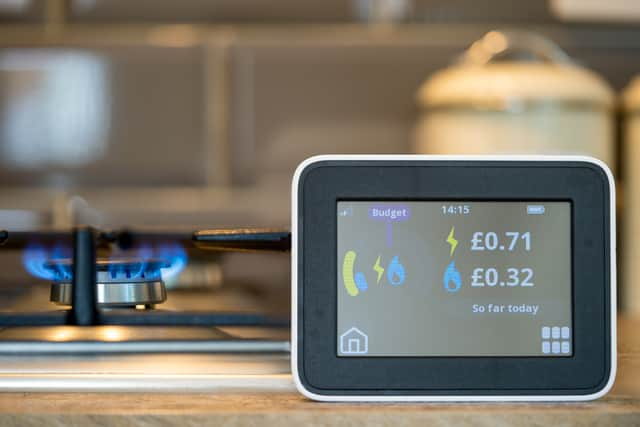Household energy bills to be ‘hundreds of pounds cheaper’ by summer after £500 hike in April
and live on Freeview channel 276
Household energy bills are forecast to be hundreds of pounds cheaper by this summer, but not before a £500 hike in April, experts warn.
The Ofgem price cap on energy bills - which regulates what energy suppliers are able to charge, but not necessarily what households pay - will fall by around £1,000 to £3,295 from the beginning of April, according to energy consultancy Cornwall Insight.
Advertisement
Hide AdAdvertisement
Hide AdBut, because of the way the government’s energy support works, households will be left paying an extra 20% for their energy and will also not get monthly payments of £66 or £67 towards their energy bills.
The amount that people pay for their energy is currently regulated by the government’s energy price guarantee which limits the amount that domestic customers pay to 34p per kilowatt hour (kWh) for electricity and 10.3p per kWh for gas.
The typical UK home’s annual gas and electricity bill is currently £2,500, but this is set to rise to become less generous from April, rising to an average bill of £3,000 - an increase of £500.


But energy suppliers are allowed to charge more, with the government picking up the difference in each household’s bill. How much a supplier can charge is decided by the Ofgem price cap which is reviewed once every three months.
Advertisement
Hide AdAdvertisement
Hide AdIt is currently set at £4,279 per year for the average household, meaning that the government has been paying about £1,779 per year to energy suppliers on average for every household they serve between September and March.
The predicted fall of the Ofgem price cap to £3,295, and the rise of the energy price guarantee level to £3,000, means the government will be paying just £295 per household per year from April to June.
‘Optimistic’ for latter half of the year
Cornwall Insight said it expects the price cap to fall further by the summer, dropping to £2,153 in July before increasing slightly to £2,161 from October.
This will be well below the price guarantee, which will feed through to lower bills for customers and reduce the government’s part of the bill to £0. But even these bills are around double where the price cap had been before the energy crisis.
Advertisement
Hide AdAdvertisement
Hide AdThe forecast for April is Cornwall Insight’s final forecast before Ofgem announces its decision. The forecasts for the latter half of the year are further away and subject to more uncertainty.
Dr Craig Lowrey, principal consultant at Cornwall Insight, said: “Regrettably the forecast for April looks set to leave the price cap above the increased Energy Price Guarantee level, meaning average annual consumer bills will effectively jump by 20% (£500). However, this is before we take into account the end of the £400 energy rebate scheme in March, meaning that the cost of energy for households will increase by even more.
“While tumbling cap projections are a positive, unfortunately, already stretched households will be seeing little benefit before July. In the latter half of the year, we see a notable shift in our predictions, as the cap falls below the government support price for the first time since the introduction of the EPG in October. This gives us optimism as far as the wider energy debate is concerned.
“While prices under the cap remain considerably higher than historic norms, the combination of falling wholesale prices and an increase in the EPG could see the return of competitive tariffs, and with it the chance for consumers to take back some control over their energy bills.”
Comment Guidelines
National World encourages reader discussion on our stories. User feedback, insights and back-and-forth exchanges add a rich layer of context to reporting. Please review our Community Guidelines before commenting.
